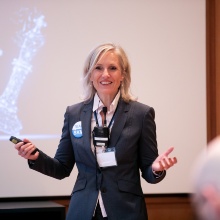“When an organization wants to be agile, it’s always about processes and the rapid adaptation to the dynamic developments of the environment. We call this ‘organizational agility‘,“ explains Dr. Christian Mahringer, who is a research fellow at the chair of Prof. Dr. Birgit Renzl at the BWI.
Changes that companies have to deal with can be caused by, for example, other companies or by interested parties. Christian Mahringer mentions the company Uber, which shook up the cab industry a few years ago, as an example. Also, companies like Tesla, developments in the field of artificial intelligence, the corona pandemic, and new demands by the government and interested parties to mitigate climate change represent such dynamic environmental factors. In all these cases, companies need organizational agility to be able to act successfully.
Original publication
Renzl, B., Mahringer, C., Rost, M., & Scheible, L. (2021). Organizational Agility: Current Challenges and Future Opportunities. Journal of Competences, Strategy & Management, Volume 11, 1–10, https://doi.org/10.25437/jcsm-vol11-51
“In our editorial in the special issue of the Journal of Competences, Strategy & Management (JCSM) we want to give an overview of how organizations succeed in becoming agile and how this process can be described and defined. The volume as a whole also provides a forum for diverse perspectives in order to improve understanding of organizational agility,” says Christian Mahringer, explaining the aim of the publication.
Many different definitions of the same phenomenon
The challenge for researchers is that there are many different definitions of the same phenomenon and that the term “agility” includes various concepts. One definition of agility describes an organizational-level phenomenon that deals with environmental dynamics and how organizations respond to those dynamics. Another refers to a specific set of methods, such as Scrum. This is an adaptive and agile approach to product development and project execution. The term originates from rugby and describes a move in which the team must organize itself independently and in close coordination between the players. Accordingly, Scrum focuses on the self-organization of the team.
The University of Stuttgart, too, is concerned with the topic of agility. A few years ago, for example, the Agility Lab was established.
The scientists also looked at how teams are working together. Methodological agility, for example, includes the topic of leadership, the question of which organizational structures exist, and how teams are organizing themselves. “Agile companies don’t necessarily use agile methods, and, conversely, a company can work with agile methods but not actually be agile,” explains Christian Mahringer. In traditional engine development in the automotive industry, for example, the aim is to further optimize existing knowledge. Although agile methods are being used here, this is not necessarily due to the agility of the organization. In other areas, such as the development of new drive technologies as well as autonomous driving, the organization as a whole has to adapt to new environmental conditions in an agile manner.
Agility as proactivity and speed
Many definitions given in the publication consider the nature of agility as an organizational ability or skill. Several authors assume that organizational agility enables companies to quickly identify and seize opportunities in the external environment and thus also surprise competing companies. According to the researchers, this temporal connotation is one of the most salient features of organizational agility. A collective behavioral pattern of actors in an organization could also facilitate organizational agility if an organizational learning and competence development process takes place at different levels.
“Agility is not only about companies reacting and adapting to environmental changes, but also about developing something entirely new, proactively shaping the environment, and influencing market dynamics like Uber did, for example,” says Dr. Christian Mahringer.
Publication via open access
The publication of the special issue reflects an important change in the academic environment, namely the increasing trend of journals being published in an open-access model. The special issue is the first issue of the Journal of Competences, Strategy & Management (JCSM) all of which is available via open access. “With the support of the University Library we set up a platform that allows us to manage the publication process and make future articles available free of access charges. We believe that this is a crucial step in preparing the journal for the academic future and we are pleased that the articles will now become more visible and available to readers from all over the world,” say the publishers.





